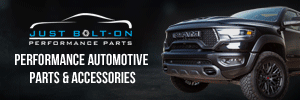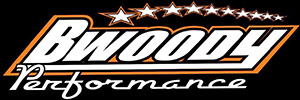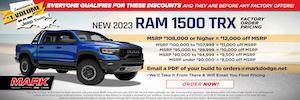MoparToYou
TRX Fan
I've been off-roading for a while, and have a fair idea of tire pressure requirements. But I just thought I would ask what other people are running with their TRX.
For my Jeep in Moab I run 10 to 13 psi.
For a dirt bike I ran 14 psi for rocky desert races, and 10 to 11 psi for sandy desert races.
For my UTV I run 10 to 13 psi
But for the TRX the speed is higher than my Jeep, and it doesn't have beadlocks like the UTV, or internal beadlocks like a bike.
For typical desert roads, with speeds from 20 to 90 mph I'm thinking 25 psi to 30 psi is about right. What do you say?
For my Jeep in Moab I run 10 to 13 psi.
For a dirt bike I ran 14 psi for rocky desert races, and 10 to 11 psi for sandy desert races.
For my UTV I run 10 to 13 psi
But for the TRX the speed is higher than my Jeep, and it doesn't have beadlocks like the UTV, or internal beadlocks like a bike.
For typical desert roads, with speeds from 20 to 90 mph I'm thinking 25 psi to 30 psi is about right. What do you say?















